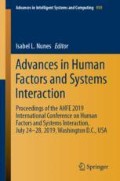Abstract
Understanding the properties of particles plays a vital role in assessing the component cleanliness and its origin in the manufacturing process. We propose a classification method using deep convolutional neural networks. Using a dataset of 70,000 annotated images, we achieve a accuracy of 97.7% for a binary classification in metal and non-metal particles comparable to state-of-the-art polarized light microscopy according to VDA 19-1 and ISO 16232. Manual follow-up checks in a cleanliness laboratory are not required due to the robustness of the classification system.
Access this chapter
Tax calculation will be finalised at checkout
Purchases are for personal use only
References
Kreck, G., Holzapfel, Y.: Reinheitsvalidierung von kontaminationskritischen Produkten, reinraum online (2013). Accessed 31 Jan 2016
Verband der Deutschen Ingenieure e. V. 2083: Reinheitstauglichkeit und Oberflächenreinheit, VDI 2083. Beuth Verlag GmbH, Berlin (2006)
Verband der Automobilindustrie e. V. 19.1: Prüfung der Technischen Sauberkeit - Partikelverunreinigung funktionsrelevanter Automobilteile, 2nd edn, VDA 19.1 (2015)
Zwinkau, R., Krebs, M.: Schlussbericht zu dem IGF-Vorhaben 17495 N/1 Reinheitsgerechte Materialflusssysteme. Technische Universität Dortmund (2014)
Kloke, U.: Auslegung von Bauteilreinigungsanlagen mit Hilfe eines Fachinformationssystems. TU Dortmund (2003)
König-Birk, J.: Die richtige Analysemethode für filmische und partikuläre Verschmutzungen finden. Fachtagung Technische Sauberkeit, Stuttgart (2014)
Valet, O.: Methoden zur Partikelidentifizierung: Analyse der Stärken und Schwächen neuer Technologie. Fachtagung Technische Sauberkeit, Stuttgart (2014)
Grüner, S., Lumpe, H., Streibl, D.: Verfahren zur Analyse einer metallische und nichtmetallische Partikel enthaltenden Partikelansammlung und Vorrichtung zur Durchführung des Verfahrens, DE102013106929A1 (2013). https://patents.google.com/patent/DE102013106929A1/de. Accessed 4 Jan 2019
Rochowicz, M., Schmauz, G.: Neues Rund um die Technische Sauberkeit: Restschmutz als Qualitätsindikator. J. für Oberflächentechnik (3), 54–56 (2010)
Oh, J., Lee, J., Hwang, S.: Video data mining. In: Wang, J. (ed.) Encyclopedia of Data Warehousing and Mining. Idea Group Reference, Hershey (2006)
Hsu, W., Lee, M.L., Zhang, J.: Image mining: trends and developments. J. Intell. Inf. Syst. (1), 7–23 (2002). School of Computing. https://eprints.usq.edu.au/5630/. Accessed 30 Aug 2018
Leavers, V.F.: Classifying wear debris particles with automatic image analysis. Pract. Oil Anal. 7(11) (2005)
Myshkin, N.K., Grigoriev, A.Y.: Morphology: texture, shape and color of friction surfaces and wear debris in tribodiagnostics problems. J. Frict. Wear 29, 192–199 (2008)
Albidewi, I.A.: Wear particles surface identification using neural network. IJCSNS Int. J. Comput. Sci. Netw. Secur. 8(1), 262–265 (2008)
Chollet, F.: Deep Learning mit Python, 2018 Auflage. MITP, Frechen (2018)
Google Trends: Weltweite Suchanfragen für “Deep Learning”: 01/2014–01/2019 (2019)
Chapman, P., Clinton, J., Kerber, R., Khabaza, T., Reinartz, T., Shearer, C., et al.: CRISP-DM 1.0 - step-by-step data mining guide (2000)
Haberzettl, S.: Vergleichsversuche mit partikulären Messsystemen. Fachtagung Technische Sauberkeit, Leipzig (2018)
Dodge, S.F., Karam, L.J.: Understanding how image quality affects deep neural networks. CoRR, abs/1604.04004 (2016)
Szegedy, C., Ioffe, S., Vanhoucke, V.: Inception-v4, Inception-ResNet and the impact of residual connections on learning. CoRR, abs/1602.07261 (2016)
Author information
Authors and Affiliations
Corresponding author
Editor information
Editors and Affiliations
Rights and permissions
Copyright information
© 2020 Springer Nature Switzerland AG
About this paper
Cite this paper
Zwinkau, R., Frentrup, S., Möhle, R., Deuse, J. (2020). Automatic Particle Classification Through Deep Learning Approaches for Increasing Productivity in the Technical Cleanliness Laboratory. In: Nunes, I. (eds) Advances in Human Factors and Systems Interaction. AHFE 2019. Advances in Intelligent Systems and Computing, vol 959. Springer, Cham. https://doi.org/10.1007/978-3-030-20040-4_4
Download citation
DOI: https://doi.org/10.1007/978-3-030-20040-4_4
Published:
Publisher Name: Springer, Cham
Print ISBN: 978-3-030-20039-8
Online ISBN: 978-3-030-20040-4
eBook Packages: EngineeringEngineering (R0)

